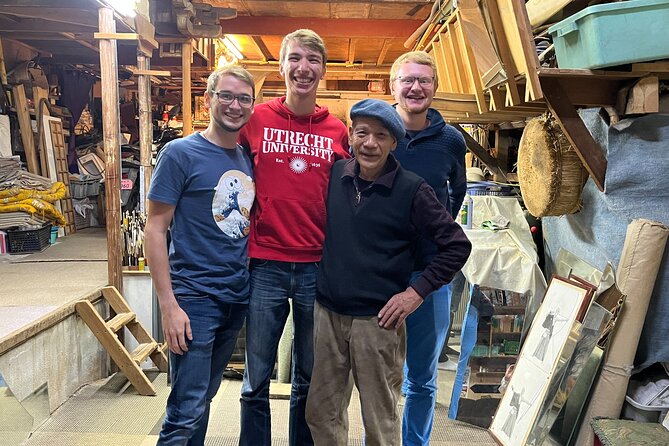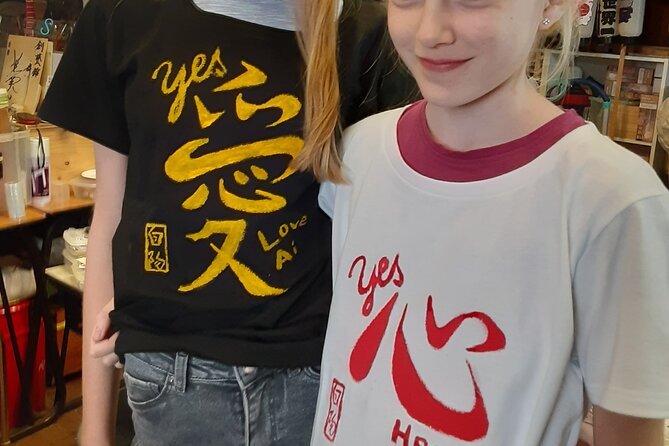Kyoto: Fushimi Inari-taisha and Kiyomizu-dera (Spanish Guide)
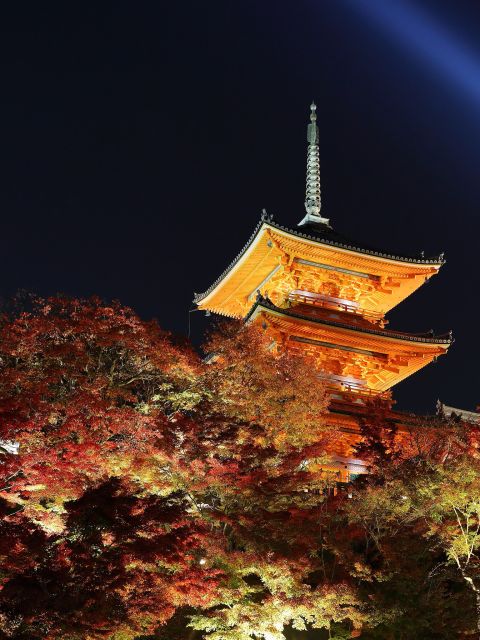
As the sun sets behind the vermillion torii gates of Fushimi Inari-taisha and the shadows lengthen over the ancient Kiyomizu-dera, visitors are invited to enjoy the spiritual aura of Kyoto.
A Spanish-guided exploration awaits, promising a cultural odyssey through these revered landmarks. Learn about the intertwined histories of Shinto and Buddhism, discover hidden treasures, and witness the harmonious blend of tradition and modernity in these sacred sites.
The journey beckons, offering a glimpse into the heart of Kyoto’s cultural heritage.
Key Points
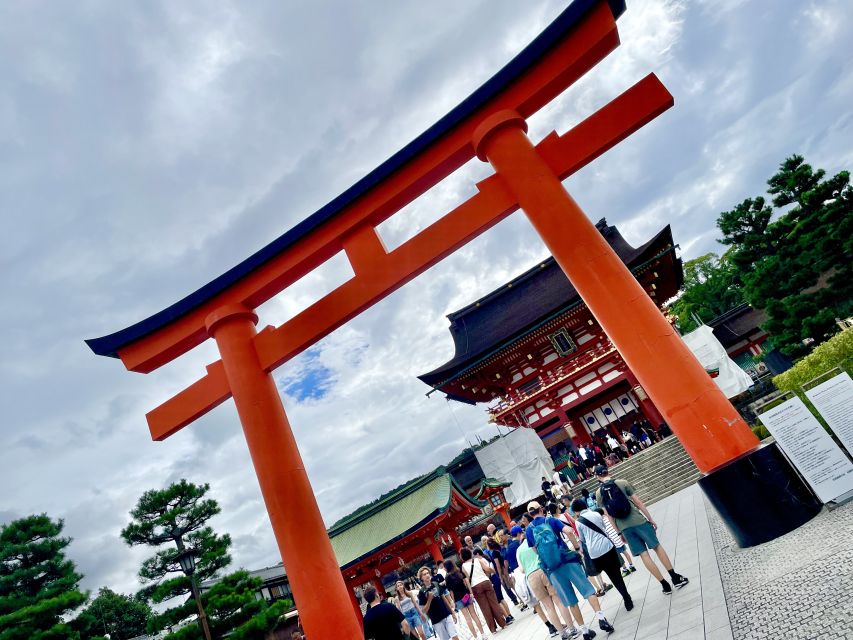
- Explore Fushimi Inari-taisha’s iconic torii gates and mountain paths
- Experience the beauty of Kiyomizu-dera Temple and its panoramic views
- Explore Shintoism and Buddhism secrets during guided tours
- Discover Kyoto’s cultural heritage with a Spanish-speaking guide
It's also worth checking out some other tours and experiences nearby.
Tour Details

When planning your excursion in Kyoto, the tour details for the Fushimi Inari-taisha and Kiyomizu-dera Spanish guided experience include a duration of 7 hours, starting at the Fushimi-Inari Station.
This guided tour offers participants the opportunity for culture with a live tour guide in Spanish. The itinerary covers key highlights such as Fushimi Inari Taisha, Otani Hombyo Temple, Otani Cemetery, Kiyomizu-dera, and Sannenzaka.
Visitors can expect to engage in activities like sightseeing, walking, and exploring scenic views. The tour provides a structured and informative exploration of these cultural landmarks, ensuring a comprehensive understanding of the historical and religious significance of these sites.
Itinerary Highlights
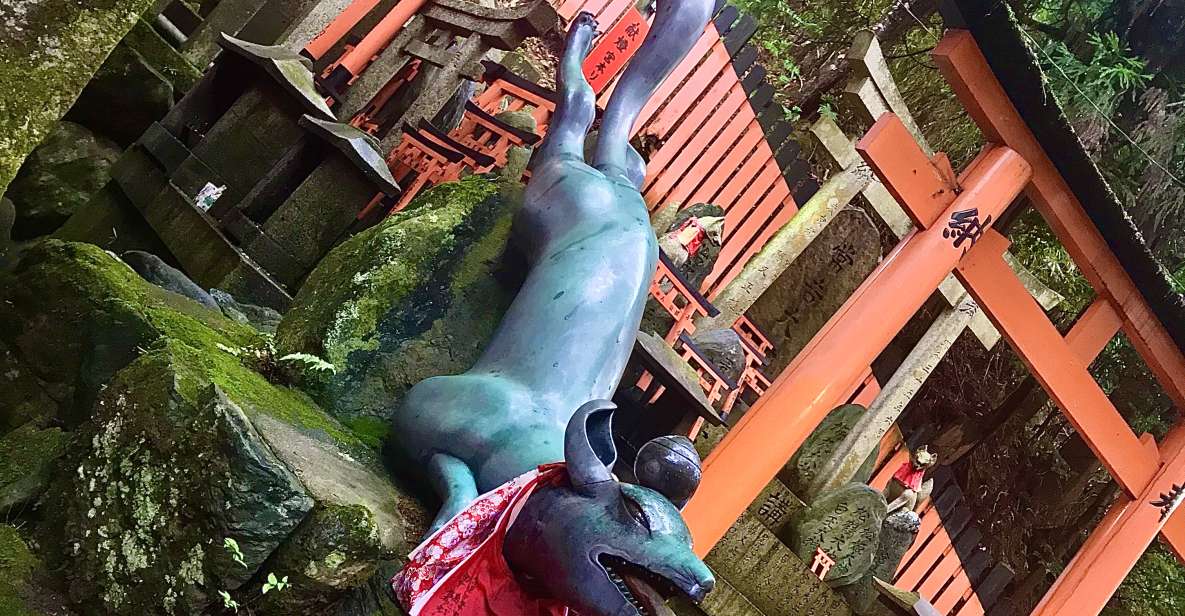
Explore the key attractions and must-see locations on the itinerary for the Fushimi Inari-taisha and Kiyomizu-dera guided tour in Kyoto.
-
Walk through the iconic torii gates at Fushimi Inari Taisha
-
Enjoy the cultural insights of Shintoism and Buddhism
-
Discover the beauty and history of Kiyomizu-dera Temple
-
Explore the serene gardens and traditional architecture
-
Gain a deeper understanding of Japanese shrines and temples
These highlights offer visitors a rich experience delving into the spiritual and architectural wonders of Kyoto, providing a blend of natural beauty, cultural exploration, and historical significance.
Main Stops
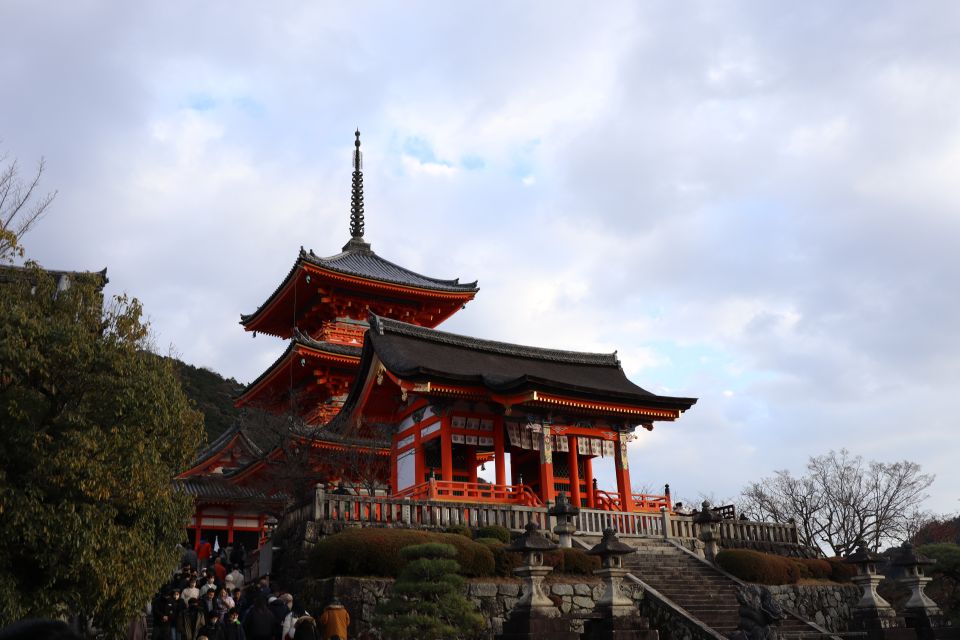
After exploring the key attractions and must-see locations, visitors are guided to the main stops on the Fushimi Inari-taisha and Kiyomizu-dera tour in Kyoto. These main stops offer abundant photo opportunities and provide deep cultural insights.
At Fushimi Inari-taisha, travelers encounter the architectural wonders of the thousands of torii gates, symbolizing spiritual significance in Shinto beliefs. The journey then leads to Kiyomizu-dera, where guests can capture breathtaking views and marvel at the temple’s traditional design.
This main stop allows visitors to appreciate the spiritual significance of the temple while exploring the serene gardens and the iconic wooden platform offering panoramic views of Kyoto.
Other Stops
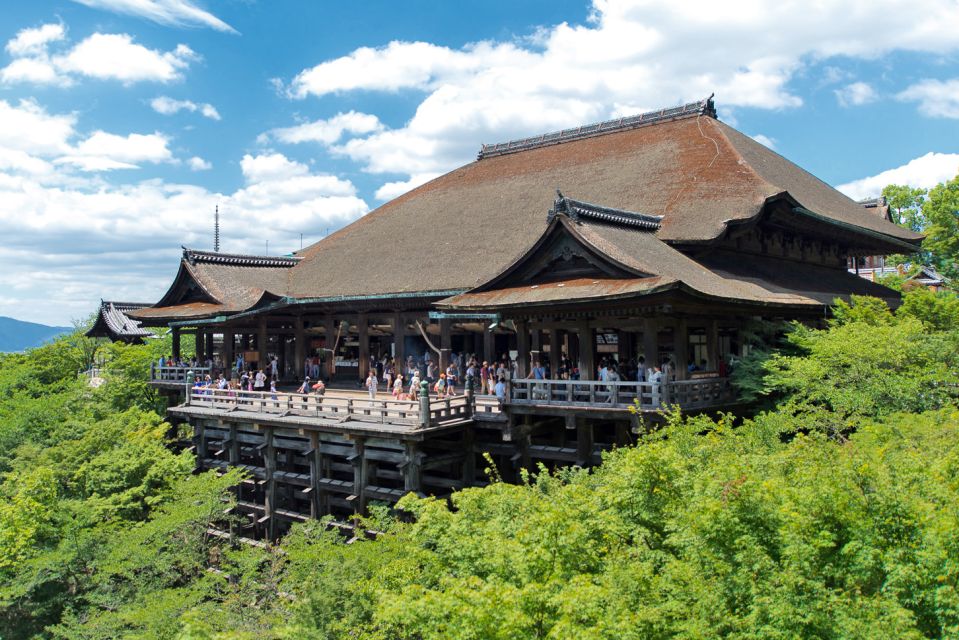
Guests on the Fushimi Inari-taisha and Kiyomizu-dera tour in Kyoto will also make stops at various locations that offer unique cultural experiences and picturesque sights.
- Cultural exploration in Gion District
- Tasting local cuisine at Nishiki Market
- Traditional tea ceremony at Uji
- Visiting the Arashiyama Bamboo Grove
- Exploring the historic Gion Corner
These stops provide visitors with a deeper understanding of Kyoto’s rich cultural heritage and offer opportunities to taste authentic local dishes.
From the tranquil settings of tea ceremonies to the bustling markets filled with culinary delights, these additional locations enhance the overall experience of the tour, blending history, tradition, and gastronomy in a memorable way.
Full Description
The journey through Kyoto’s Fushimi Inari-taisha and Kiyomizu-dera begins at the iconic red torii gates of Fushimi Inari-taisha, leading visitors through mountain paths filled with scenic views and small shrines.
At Kiyomizu-dera, visitors can marvel at the traditional architecture, including the wooden platform offering panoramic views. The temple’s main hall and serene gardens provide insight into the cultural significance of the site.
The exploration of architecture at Kiyomizu-dera highlights the beauty and majesty of the temple grounds. Understanding the historical and cultural importance of these sites enhances the experience of visitors, offering a deeper connection to the traditions of Shintoism and Buddhism.
Important Information
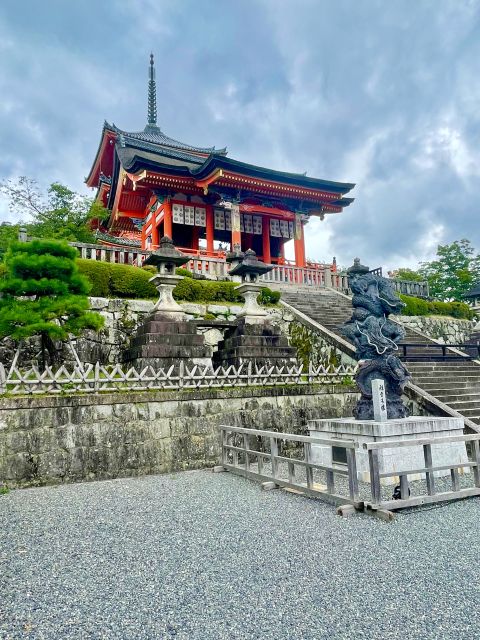
Prioritize comfort and practicality by ensuring you wear suitable footwear and attire for the tour.
Remember to pack essentials like sunscreen and a refillable water bottle.
Respect cultural etiquette when visiting temples and interacting with locals.
Indulge in the local cuisine to experience the flavors of Kyoto.
Avoid using baby strollers as they aren’t allowed in some areas.
Save time for souvenir shopping to bring back unique mementos from your trip.
Frequently Asked Questions
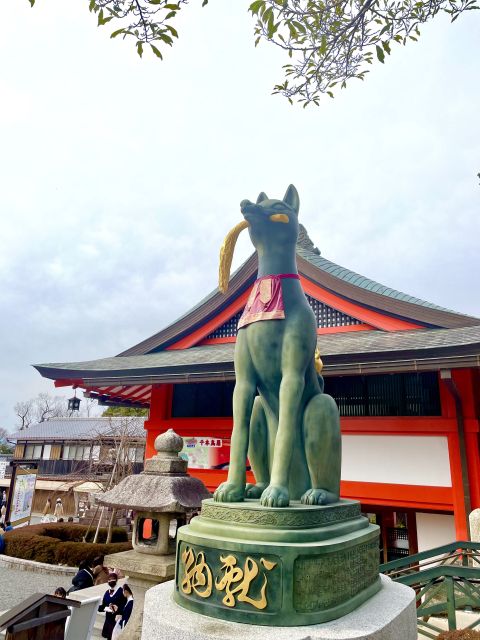
Is There a Specific Dress Code or Attire Required for Visiting Fushimi Inari-Taisha and Kiyomizu-Dera?
When visiting Fushimi Inari-taisha and Kiyomizu-dera, there is no specific dress code, but it’s recommended to wear comfortable shoes and clothes suitable for walking and climbing. Avoid baby strollers and be prepared for moderate physical effort.
Are There Any Restrictions on Photography or Videography at the Sites?
Photography at Fushimi Inari-taisha and Kiyomizu-dera is generally allowed, but it’s advisable to respect other visitors, refrain from disrupting rituals, and follow any specific guidelines provided by guides. Videography may have restrictions, so inquire beforehand.
Are There Any Recommended Local Restaurants or Food Options Near the Meeting Point or Tour Stops?
Local cuisine options near the meeting point or tour stops include traditional Japanese restaurants offering sushi, ramen, and tempura. Visitors can enjoy dining on authentic dishes, seeing the local food culture.
Are There Restroom Facilities Available Along the Tour Route?
Restroom facilities are available along the tour route. Plus, hydration stations are accessible for convenience. Visitors can easily find necessary amenities to ensure a comfortable experience while exploring the attractions.
Are There Any Specific Cultural Customs or Etiquette That Visitors Should Be Aware of When Visiting These Temples and Shrines?
Visitors should be aware of specific cultural customs and etiquette when visiting these temples and shrines. Respecting silence, removing shoes, bowing, and refraining from photography in certain areas are key practices to observe.
Recap
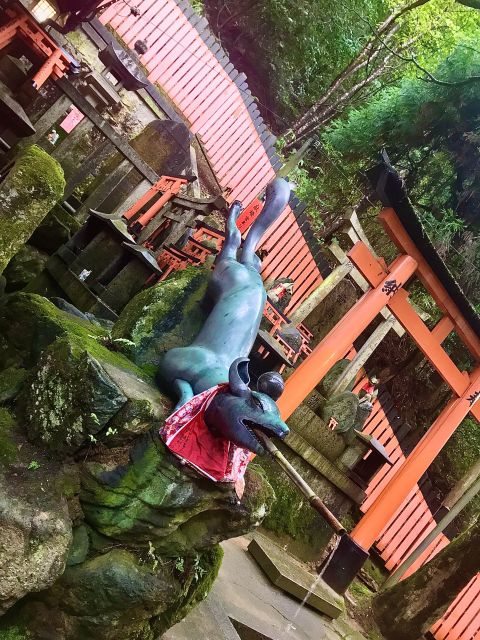
To sum it up, the guided tour of Fushimi Inari-taisha and Kiyomizu-dera in Kyoto offers Spanish-speaking visitors a captivating journey through the cultural wonders of these iconic landmarks.
Led by a knowledgeable guide, the 7-hour experience provides a deeper understanding of the history, spirituality, and significance behind each site, ensuring an unforgettable exploration of Kyoto’s ancient heritage.
Don’t miss this opportunity to learn about the beauty and traditions of these revered temples.


